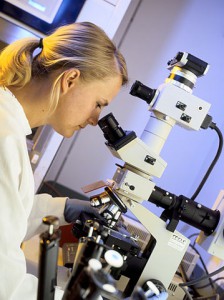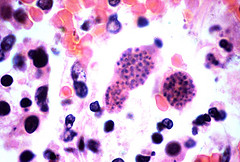 For over a decade, BMC Clinical Pathology has been receiving and publishing an ever increasing number of articles, while pioneering the open access model. Until now, the journal has been administered by our in-house editorial team. However, as our visibility increases we must put better mechanisms in place to handle increasing submissions and ensure that the journal has the appropriate editorial policies to best serve the scientific community.
For over a decade, BMC Clinical Pathology has been receiving and publishing an ever increasing number of articles, while pioneering the open access model. Until now, the journal has been administered by our in-house editorial team. However, as our visibility increases we must put better mechanisms in place to handle increasing submissions and ensure that the journal has the appropriate editorial policies to best serve the scientific community.
We are very happy to announce that BMC Clinical Pathology is moving to new editorial model. We have called on an international panel of experts to join our Editorial Board as Section and Associate Editors and share their scientific expertise in order to ensure consistent peer review and further development in light of the rapidly growing field.
From this week the journal will be divided up into seven sections, covering the wide and exciting world of pathology. Neil Sebire, from Great Ormond Street Hospital in the  United Kingdom, has joined BMC Clinical Pathology as Section Editor, heading the Autopsy and Forensic Pathology section. In this section, we encourage submissions on a wide range of clinical aspects of forensic pathology.
United Kingdom, has joined BMC Clinical Pathology as Section Editor, heading the Autopsy and Forensic Pathology section. In this section, we encourage submissions on a wide range of clinical aspects of forensic pathology.
We are also very excited to announce that Ferdinando Mannello, from the University of Urbino, will be heading our Clinical Biochemistry section. This section aims to publish articles covering the analysis of bodily fluids; we particularly encourage submission of studies on bodily fluid biomarkers in disease and diagnosis. Professor Mannello is also providing his expertise as a Section Editor in BMC Cancer. This highlights the close relationship between the two journals and will allow for a quicker assessment of the suitability of articles for consideration in one or the other journal.
We want to make sure that we provide a home for all aspects of clinical pathology research. Our Cytopathology section will cover pathology and biomarker studies at the cellular level, and will be headed by Sandeep Mathur, from the All India Institute of Medical Sciences, while our Histopathology section will publish studies on all aspect of histopathology including articles investigating microscopic examinations of tissues from biopsies or surgical specimens. This section will be headed by Rui Henrique, from the Portuguese Oncology Institute. Studies on different aspects of hematopoietic cell pathology will be considered in the Hematopathology section, and Dan Jones, from Quest Diagnostics Nichols Institute, will help us to assess them as the head of this section.
As technologica l advances provide us with better and more sensitive methods to analyse even sub-microscopic aspects of disease, our Cytogenetics and Molecular Diagnostics section, headed by Karoly Szuhai from Leiden University Medical Center, aims to publish studies on genetic alternations in disease prognosis and provide a platform for sharing new technological advances. Last, but not in any way least, our Medical Microbiology section will publish articles relating to the pathology of infectious diseases.
l advances provide us with better and more sensitive methods to analyse even sub-microscopic aspects of disease, our Cytogenetics and Molecular Diagnostics section, headed by Karoly Szuhai from Leiden University Medical Center, aims to publish studies on genetic alternations in disease prognosis and provide a platform for sharing new technological advances. Last, but not in any way least, our Medical Microbiology section will publish articles relating to the pathology of infectious diseases.
With such a fantastic group of Section and Associate Editors, we are excited to see how the journal will grow in the next decade. As the content of the journal will remain freely available, join us in discovering what the future holds for the field of pathology.
To submit your manuscript to BMC Clinical Pathology, please visit the journal website for further information, or contact the Executive Editor Dr Magdalena Morawska for any pre-submission enquiries. We look forward to hearing from you.
Comments